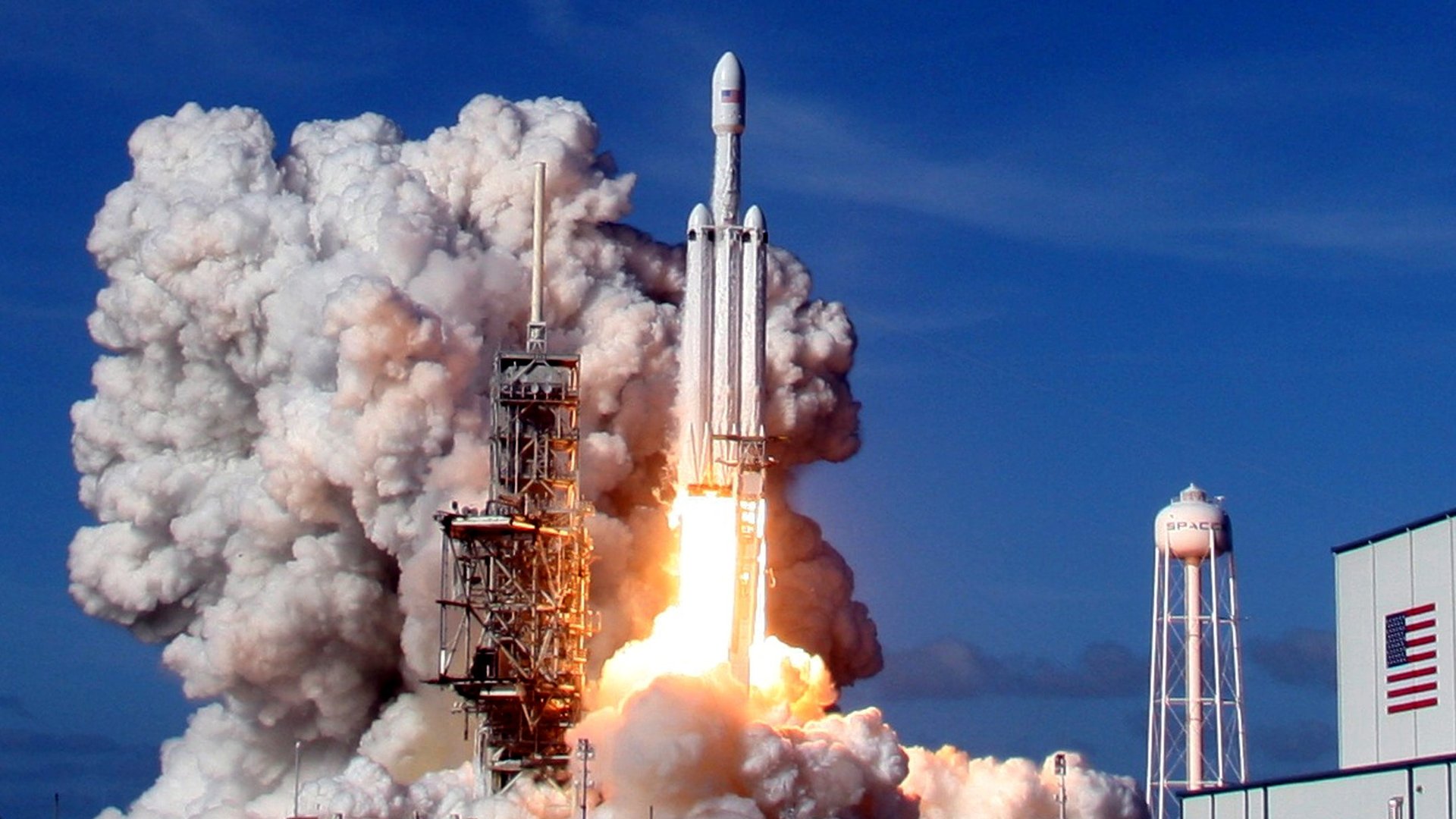Watch SpaceX perform a complicated Falcon Heavy launch
Elon Musk says tonight’s Falcon Heavy mission is one of SpaceX’s most difficult ever.


Elon Musk says tonight’s Falcon Heavy mission is one of SpaceX’s most difficult ever.
He always says that, but the bombastic entrepreneur usually has a point. Tonight’s flight will feature some unusual (for SpaceX) orbital choreography to help show the US Air Force that its newest rocket can deliver satellites on demand, setting the stage for lucrative future missions.
The show is expected to start with lift-off from Kennedy Space Center at 11:30 pm ET. Minutes after launch, the rocket’s two side boosters will separate and attempt to return to earth at landing sites on nearby Cape Canaveral. Next, the center booster will split from the rocket’s second stage and try to touchdown on an autonomous droneship in the Atlantic Ocean, nearly eight hundred miles off the Florida coast. You can watch the action on the company’s live video feed:
Things get more interesting when the second stage of the rocket reaches orbit. It will be carrying 24 satellites, a mixture of test vehicles for the US Air Force and other military agencies, NASA, the National Oceanic and Atmospheric Administration, and universities. To put all these spacecraft in the right orbits around the earth, the rocket will need to fire its engine four separate times to visit three different orbits over the course of six hours.
Many of the spacecraft are shrouded in national security mystery, but some offer neat technological promise. One pilot project is testing a new “green” space propellant, which could replace the difficult-to-handle toxic fuels often used by spacecraft due to their efficiency. Another will deploy a “deep space atomic clock” for testing. If it works, future space missions will be able to figure out where they are with their own internal timekeeping rather than relying on navigation signals from earth.
Though this is the third flight of the Falcon Heavy, it’s the first purchased by the US Air Force. Military planners want rockets that are able to deploy satellites quickly to the right orbit, rather than waiting for several months as the spacecraft position themselves under their own power, as many commercial satellites do. This mission will help convince Air Force brass that the Falcon Heavy can do this reliably, even as SpaceX is in contention for military space contracts worth billions of dollars.
Besides being the most powerful rocket on the market today, the Falcon Heavy is also one of the cheapest. That’s in part because of its reusable boosters, a feature lacking in other large rockets. This is the first time a US Air Force mission has flown on the flight-proven boosters. If everything goes smoothly, it won’t be the last.